We have already mentioned the archaeological site of Eloro
here . These are the remains of an ancient
polis, a colony of Syracuse, which unfortunately is not
enough to officially visit: the whole area is fenced and abandoned. Fortunately, the unofficial offers a couple of unexpected possibilities close to the sea ... The uncultivated vegetation, the steep ground, the presence of wells (in truth put in relative safety with metal gratings by the willing archaeologists who in the last century have worked of the few and insufficient diggings) and of hoes of hoe and bulldoz here and there by industrious tombaroli, make the visit of the site not without dangers (risk of a fine fine apart). From the point of view of safety, therefore, its fencing is justified. It is the neglect and its abandonment that I struggle to accept. Especially at the sight of the villa built between the
l'Agora and the
Asclepion that would have had to host the custodian of the archaeological area. What would make Eloro deserve more care and attention? The remains of a small
archaic theater (unfortunately genially shredded by a casually fascist reclamation channel), of a
Temple of Demeter and Kore, of a
may be considered sufficient Stoà and the aforementioned
Agora and
Asclepion? Because if they were, his negligence and his abandonment would be a sin hardly forgivable.

The earliest traces of Greek culture on the promontory on which the
polis stands can be dated to the 8th century BC.
Eloro, so named for the proximity of the river of the same name, today Tellaro, was connected to Syracuse via the important Via Elorina. The rocky and rugged coastline on which it overlooks, which interspersed two splendid and frequent sandy beaches (we reflect on the increase of tourist
appeal if Eloro was cared for and visitable) preserves signs of significant human interventions, suggesting that the morphology of the coast at the time must have been so different as to harbor port facilities.
The most important excavations were carried out at the beginning of the 20th century by Paolo Orsi and Rosario Carta. There was a recovery in the late 50s and 70s by Elio Militello, Vito Piscione and Giuseppe Voza. In 1965, Maria Teresa Currò strove to give systematicity to the historical information hitherto inferred from the excavations. And if the information that the
Dott. Fabio Copani in this regard they are correct, since the '80s there seems to have been flat calm: in essence no one has moved a stone anymore (grave robbers, of course). Great! It is yet another sign that
in Sicily we know how to value our resources ...
The aspect that fascinates me most in the history of Eloro, in common with other ancient settlements
siculi such as Noto Antica, is that its
Hellenization happened peacefully and gradually compared to the more hasty, traumatic and frequent expulsion of the indigenous to the sound of the sword from the territories in which the Greeks decided to found a colony (in fact there are examples of the "gentle" ways in which the Corinthian Archia "turned" the Sicilians from Ortigia). Apparently the promontory of
Eloro was already inhabited by the Sicels before the foundation of Syracuse, as well as, for example, Noto Antica. For the Greeks, the Sicilians never represented a military threat, since the organizational and technological gap between them was notable, therefore, unless they wanted to take possession of a new territory on which to found a new colony, they would have had no reason to drive them out of Eloro. However, it is true that the
polis Eloro however developed on a promontory overlooking the mouth of the Tellaro (at the time navigable) and therefore could also act as a Syracusan outpost, to defend the Greek metropolis from the Sicilian raids south. However, as previously pointed out, it is equally true that there would have been no reason to work so hard to contain the Sicilian threat. Among other things, the Sicels, aware of the Greek warlike ability that had also swept away Pantalica, adopted an attitude of reverence and accommodation towards the powerful Syracuse. The need of the Syracusans was therefore not really the foundation of a new colony, but rather the
rapid occupation of the last port useful south on the Ionian coast. To this end, the painless way of integration with the Sicilian population already established on the promontory of Eloro was decided, being located close to a river surrounded by fertile fields,
as Dr. Copani points out , could have represented
the ideal landing place for the foundation of a colony by Greeks of rival cities, then a threat to Syracuse far more real than Sicilian cities.

Eloro was certainly inhabited until the Byzantine era, as evidenced by the traces of the construction of a church on the ruins of the
stoà (common practice in Sicily, where the bases of older structures were used for the construction of new structures). The
Torre Stampace, whose remains are visible at the south-east corner of the promontory was instead built by the Aragonese in the fourteenth century on the remains of a fortress of which there is evidence in Roman times.
The only positive aspect of the archaeological area of Eloro is that the difficulty of being reached and being close to the Reserve of Vendicari,
preserves it from being buried in the garbage, fate that can not be found elsewhere archaeological and monumental sites in the area, such as the Grotta di Calafarina, the Torre Scibini or the Torre Fano (of which, I hope, I will soon have the pleasure of speaking to you).
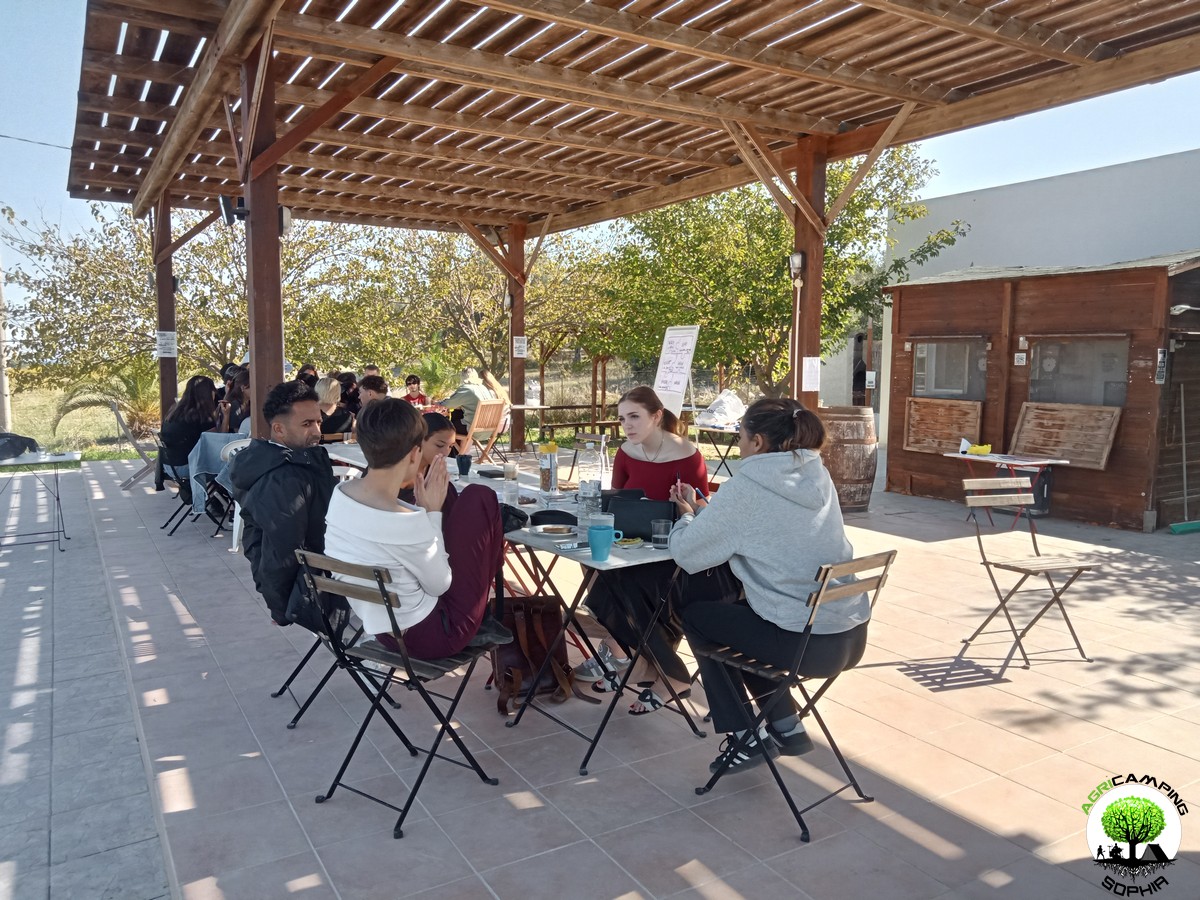 DO YOU WANT TO ORGANIZE AN ERASMUS AT AGRICAMPING SOPHIA?
DO YOU WANT TO ORGANIZE AN ERASMUS AT AGRICAMPING SOPHIA?
WHAT IS AGRICAMPING SOPHIA?
It is a campsite with tent pitches, glamping tents, mobile homes and bungalows
WHERE IS IT?
In Italy, in Sicily, near Syracuse, in Pachino: 36.736883, 15.095610
HOW TO CONTACT US?
info@agricampingsophia.it
(SPEAK ENGLISH) +39 3473079242 – (ONLY SPEAK ITALIAN) +39 3452396095
WHAT DO WE OFFER?
We offer hospitality and catering for Erasmus projects
FOR HOW MANY PEOPLE?
We can have 4-7 single beds in the Socrate Bungalow, 6-10 single beds in the Platone Mobile Homes, 4-6 single beds in the Aristotele Mobile Homes, 4 single beds in the Iblone Mobile Homes, 4 single beds in the single beds in the Empedocle Glamping Tents. In total we therefore have 18 comfortable single places or 31 single places with a fair spirit of adaptation.
IN WHICH PERIOD CAN AGRICAMPING SOPHIA BE AVAILABLE?
The most suitable periods to use our services...
 CART RUTS MODELED ON SOFT ROCK?
CART RUTS MODELED ON SOFT ROCK?
Read also RACK OR HOUSING FOR CLOGS?
Some cart ruts from the Targia district, in Syracuse, and most of the cart ruts from Granatari Vecchi, in Rosolini, give the impression of having been impressed, modelled, on a rock that was originally viscous, not entirely solid. As absurd as this hypothesis may seem, especially in Granatari Vecchi, the softness of the shapes and the at least anomalous uniformity of the rock bank, as if it were a concrete casting, which hosts the cart ruts, is unicum compared to the lithic context in the area.
In Targia this phenomenon is less impressive but if we consider the cart ruts essentially cart tracks, therefore furrowed roads indirectly resulting from the repeated passage of carts along the same route, we do not understand why such uniformity and smoothness is present, in the majority of cases, also on the parts not affected by the passage of the...
 RACK OR HOUSING FOR CLOGS?
RACK OR HOUSING FOR CLOGS?
Read also CART RUTS CUT FROM QUARRIES
In the presence of slopes, even slight ones, in some cart ruts in the Targia district, in Syracuse, central holes are found with a diameter of between 30 and 50 centimeters and a depth of 15-20 centimeters, spaced about 50 centimeters apart. Neither the position (they are not exactly in the center of the cart ruts and perfectly aligned with each other), nor the shape appear perfectly regular: either the passage of time and any wear have profoundly modified their original shape or, simply, they have never had a systematic regularity. However, the offset in position between one hole and another is never completely “off-axis”: there is always a portion about twenty centimeters wide that coincides with the same portion of the previous and subsequent hole. The best preserved and most defined holes are found in the cart ruts usually called Scala...
 CART RUTS CUT FROM QUARRIES
CART RUTS CUT FROM QUARRIES
Back to CART RUTS AND A FEW TOO MANY PROJECTIONS
I will skip any preamble, referring to what has already been written regarding the presence of cart ruts in south-eastern Sicily.
The easy academic tendency has been, in most cases concerning cart ruts, to consider them in terms of the latomie, or quarries, with which very often (for example in the cases of the Targia or Pizzuta districts) they share the same territory.
According to this theory, the carraie would have been indirectly created due to the wear of the rock at each passage of carts or sleds loaded with extracted stone blocks. I will not repeat the arguments presented so far in order to demonstrate that this is a theory that has little solid foundations on an in-depth analysis of the cart ruts. However, I will add a piece by demonstrating the implausibility of a connection between them in both chronological and functional...
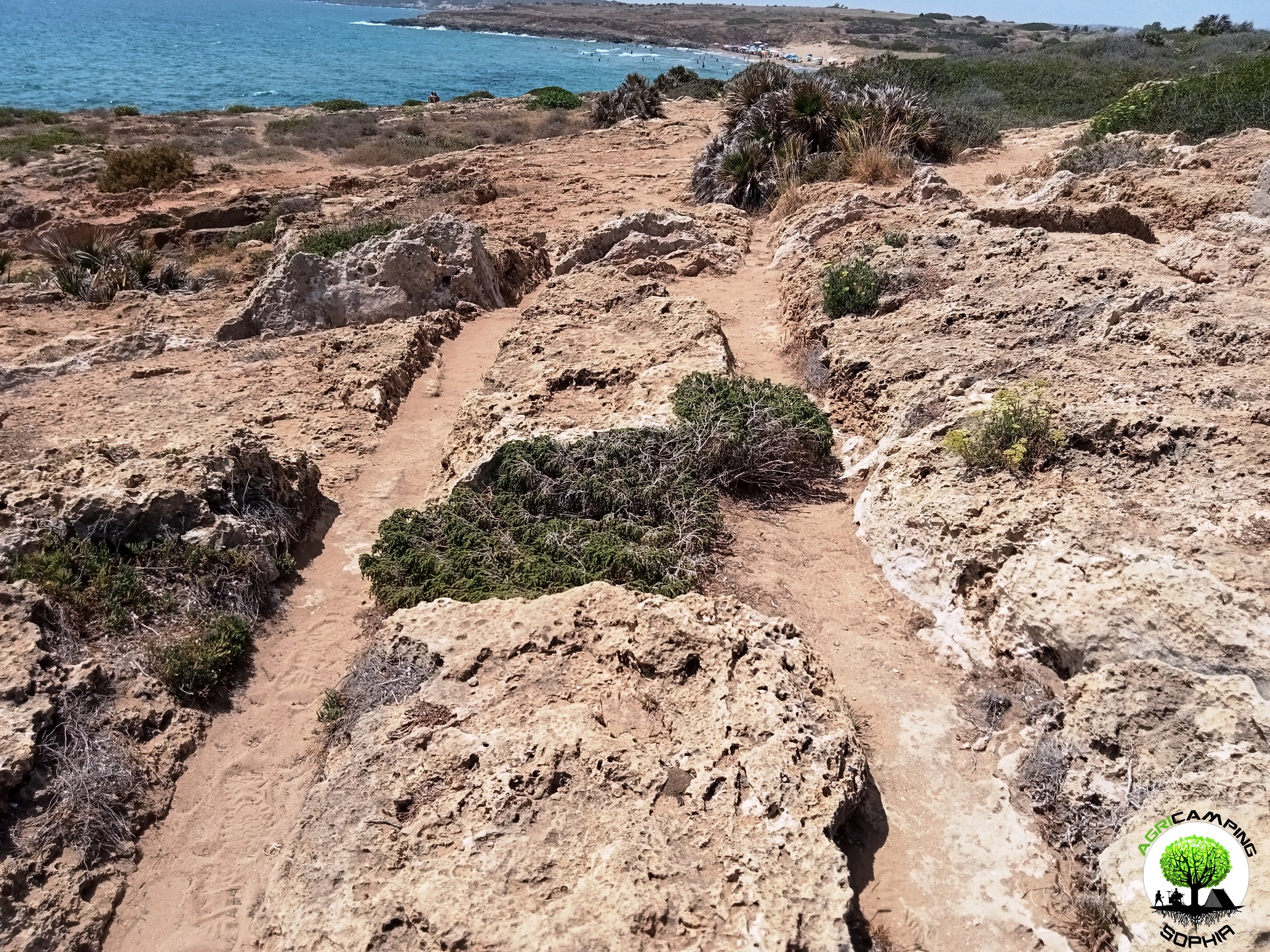 CART RUTS AND A FEW TOO MANY PROJECTIONS
CART RUTS AND A FEW TOO MANY PROJECTIONS
Read also THE POLISHING OF THE CART RUTS
I will skip any preamble, referring to to what has already been written regarding the presence of cart ruts in south-eastern Sicily.Considering the possibility that the cart ruts were gradually dug by the passage of carts pulled by pack animals, for example pairs of oxen, observing certain sections of the cart ruts present in the Granatari Vecchi district, in Rosolini, and in the Pizzuta district, close to the Vendicari Reserve, two questions arise:
1. Why force the animals to pass over rough surfaces and protrusions high, compared to the base of the furrows, even 60-70 centimeters?
2. Why, in the presence of such obstacles, not opt for a detour?
For Mottershead, Pearson and Schaefer such protrusions appeared later, since at the time of the passage of the wagons, a layer of earth covered the rocky bank, thus not making the obstacle...
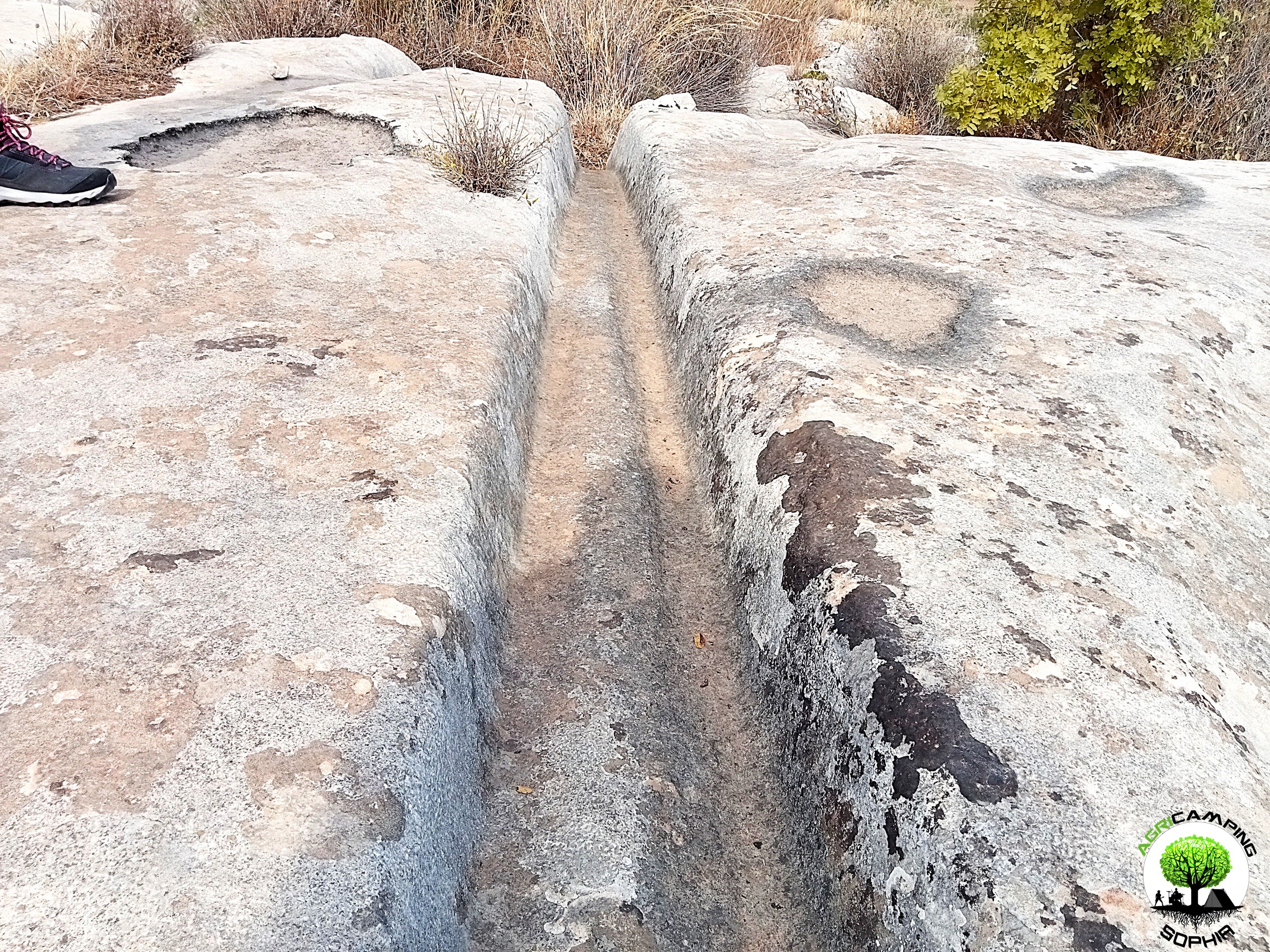 THE POLISHING OF THE CART RUTS
THE POLISHING OF THE CART RUTS
Read also THE PROBLEMATIC EDGES OF THE CART RUTS
I will skip any preamble, referring to to what has already been written regarding the presence of cart ruts in south-eastern Sicily.
To proceed with this comparison I have chosen a probable capital and the corner of a recess present in a block of the northern walls of Eloro that would seem to resemble a pinax, that is, a niche that would have housed a fresco of the heroa, but which a more careful observation refers to a system functional to the grip of the block through a pincer winch. Both elements, like the curt ruts, have remained at the mercy of the elements for millennia, and are therefore subject to comparable wear and tear due to the passage of time. The finishing of the capital should be of a high standard, since it is an architectural element that also has an aesthetic function. The recess, on the other hand, should have...
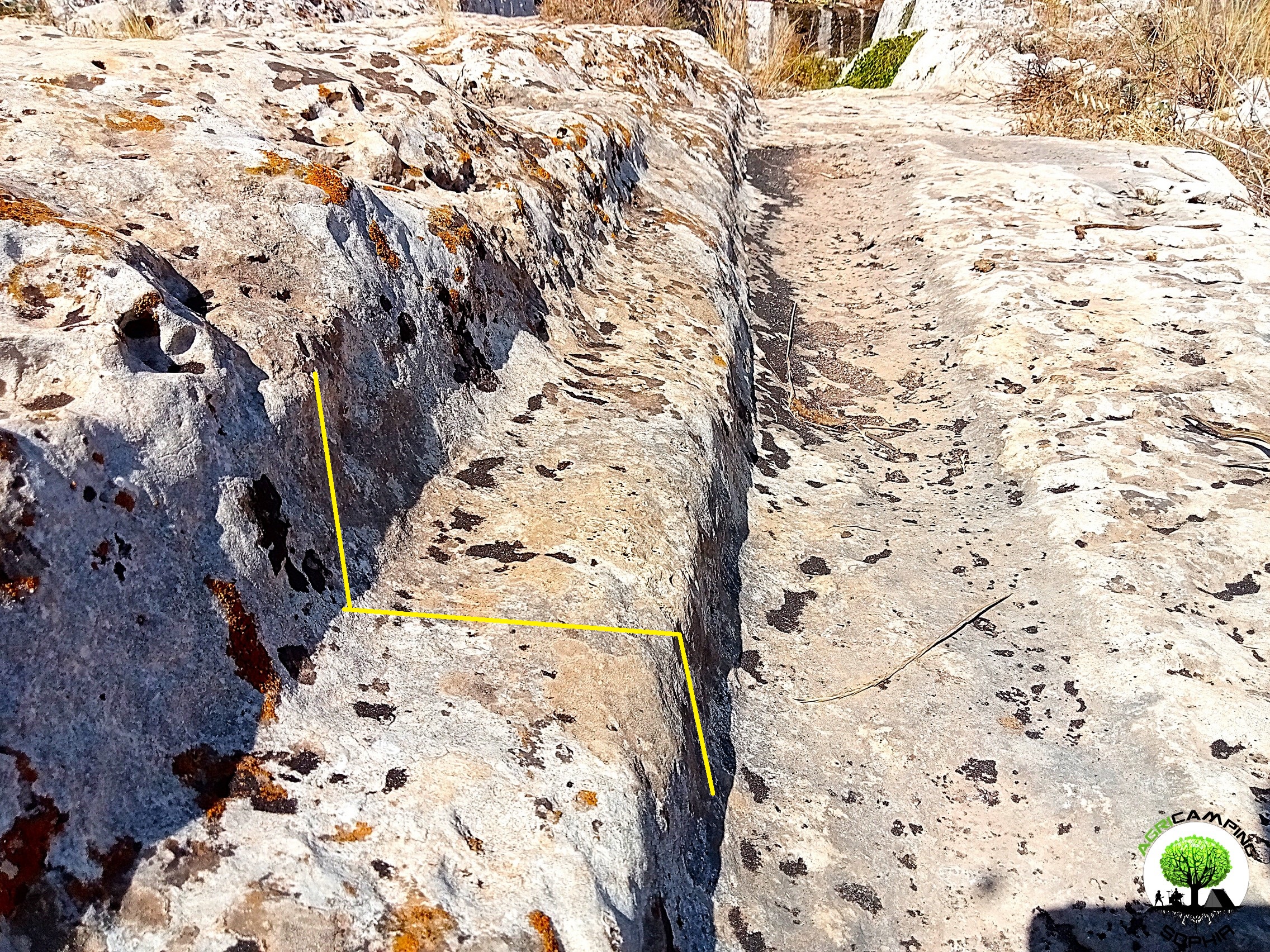 THE PROBLEMATIC EDGES OF THE CART RUTS
THE PROBLEMATIC EDGES OF THE CART RUTS
I will skip any preamble, referring to to what has already been written regarding the presence of cart ruts in south-eastern Sicily.As can be seen in other sites around the world, in some cart ruts I visited, in particular in the Cugni district in Pachino, in the Granati Vecchi district in Rosolini and in the Targia district in Syracuse, a clear border can be seen, a sort of frame, next to the grooves, more marked externally, barely noticeable internally.
The borders I measured have a width of 14-20 centimeters and a height of 8-10 centimeters.
Not all cart ruts have such frames present or particularly evident, regardless of the degree of wear or degradation. They are found above all in cart ruts with less deep grooves.
As already described in detail, given the presence of furrows with a depth of even 65-70 centimeters, the wheels of a possible vehicle would have had to have a...
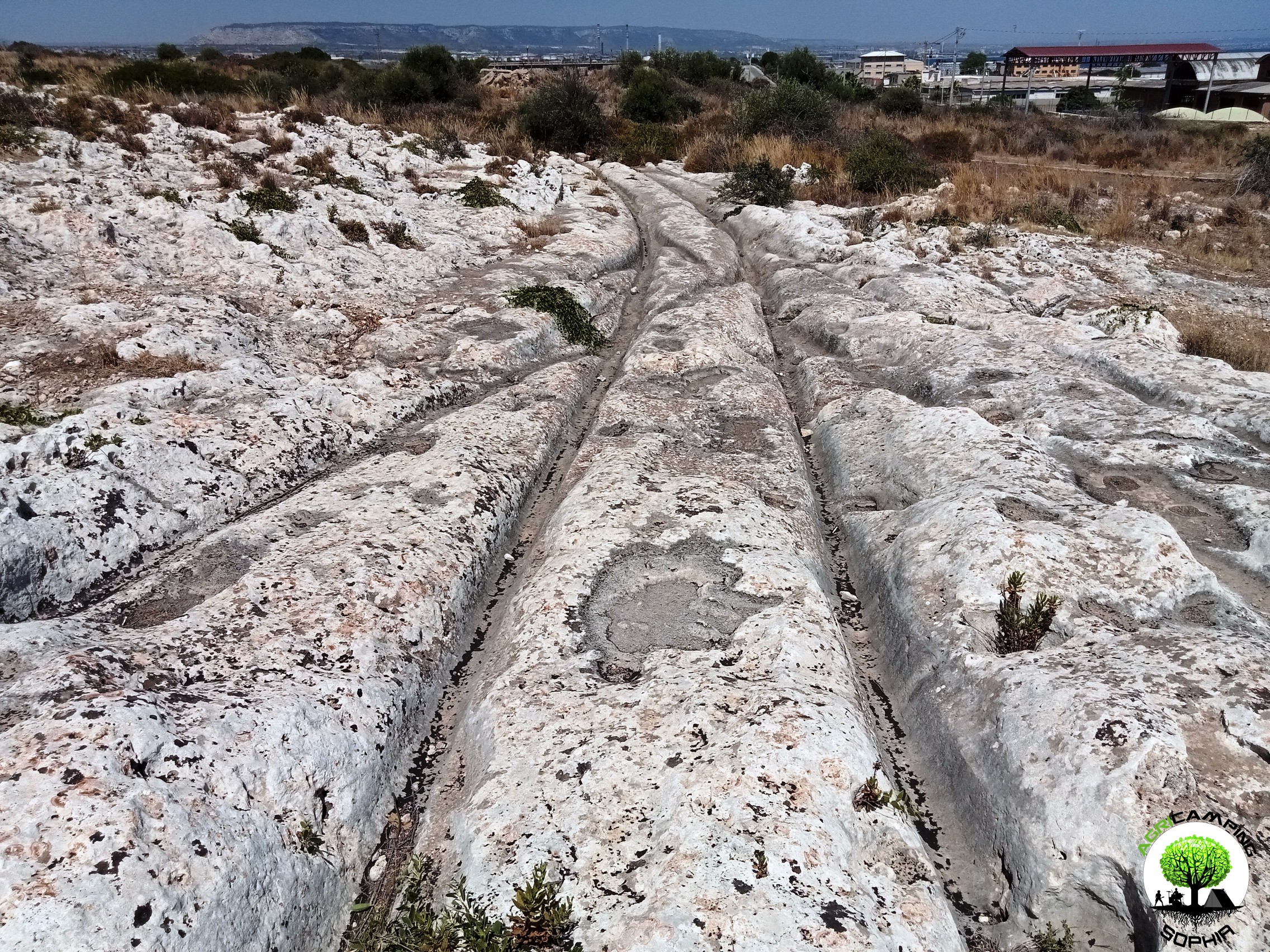 THE PROBLEM OF CART RUTS IN SOUTH-EASTERN SICILY (PART FOUR)
THE PROBLEM OF CART RUTS IN SOUTH-EASTERN SICILY (PART FOUR)
Click here to return to third part
Clapham Junction
As in the Maltese site Misrah Ghar Il-Kbir, also in the Targia and Granatari Vecchi districts the cart ruts intersect and cross each other in a similar way to the track switches in a railway station. The nickname Clapham Junction that was given by David H. Trump to the Maltese site, derives precisely from the similarity with the famous English railway station. For Sagona these are agricultural furrows and water channels, for Mottershead, Pearson and Schaefer these are abandoned paths due to obstacles and wear. Obviously we do not know what the morphology of the Syracuse and Rosolini territory was at times when the cart ruts were traced, but considering the current context, there certainly would have been no agricultural reason to build them, given the presence of fertile land, springs and fresh water courses just a few kilometers...






 DO YOU WANT TO ORGANIZE AN ERASMUS AT AGRICAMPING SOPHIA?
DO YOU WANT TO ORGANIZE AN ERASMUS AT AGRICAMPING SOPHIA? CART RUTS MODELED ON SOFT ROCK?
CART RUTS MODELED ON SOFT ROCK? RACK OR HOUSING FOR CLOGS?
RACK OR HOUSING FOR CLOGS? CART RUTS CUT FROM QUARRIES
CART RUTS CUT FROM QUARRIES CART RUTS AND A FEW TOO MANY PROJECTIONS
CART RUTS AND A FEW TOO MANY PROJECTIONS THE POLISHING OF THE CART RUTS
THE POLISHING OF THE CART RUTS THE PROBLEMATIC EDGES OF THE CART RUTS
THE PROBLEMATIC EDGES OF THE CART RUTS THE PROBLEM OF CART RUTS IN SOUTH-EASTERN SICILY (PART FOUR)
THE PROBLEM OF CART RUTS IN SOUTH-EASTERN SICILY (PART FOUR)